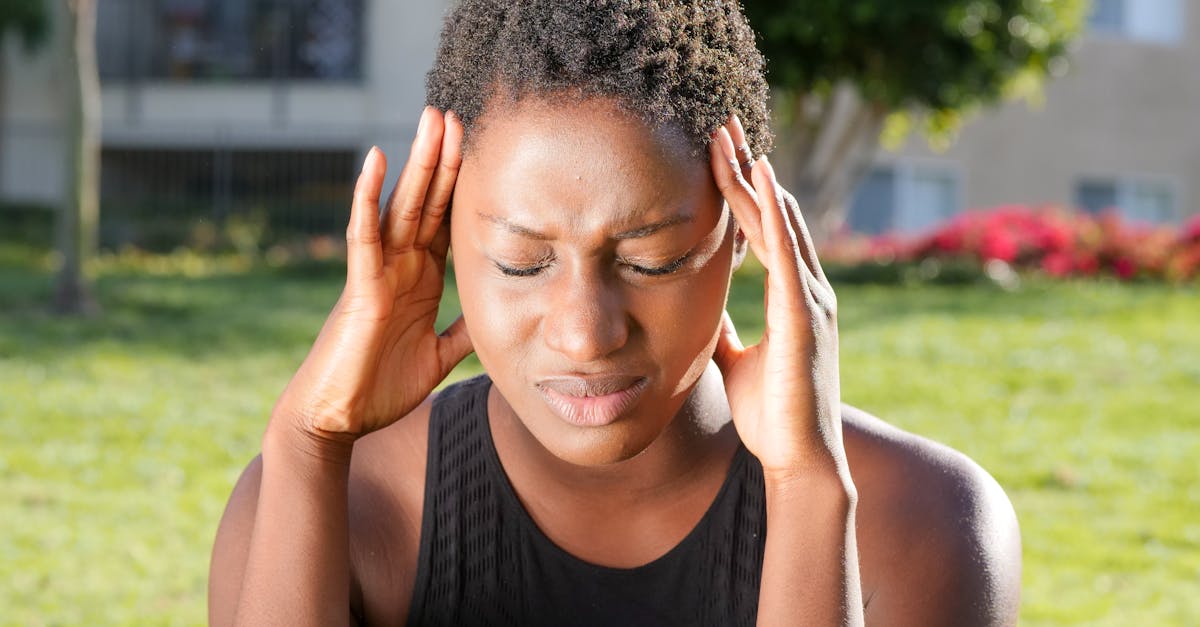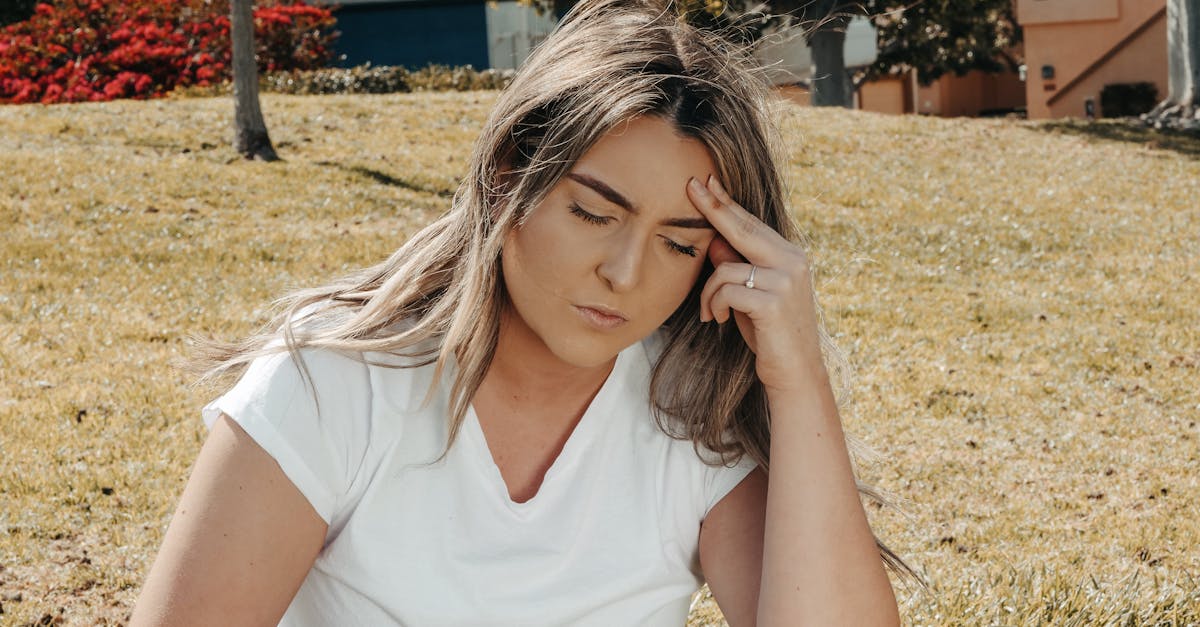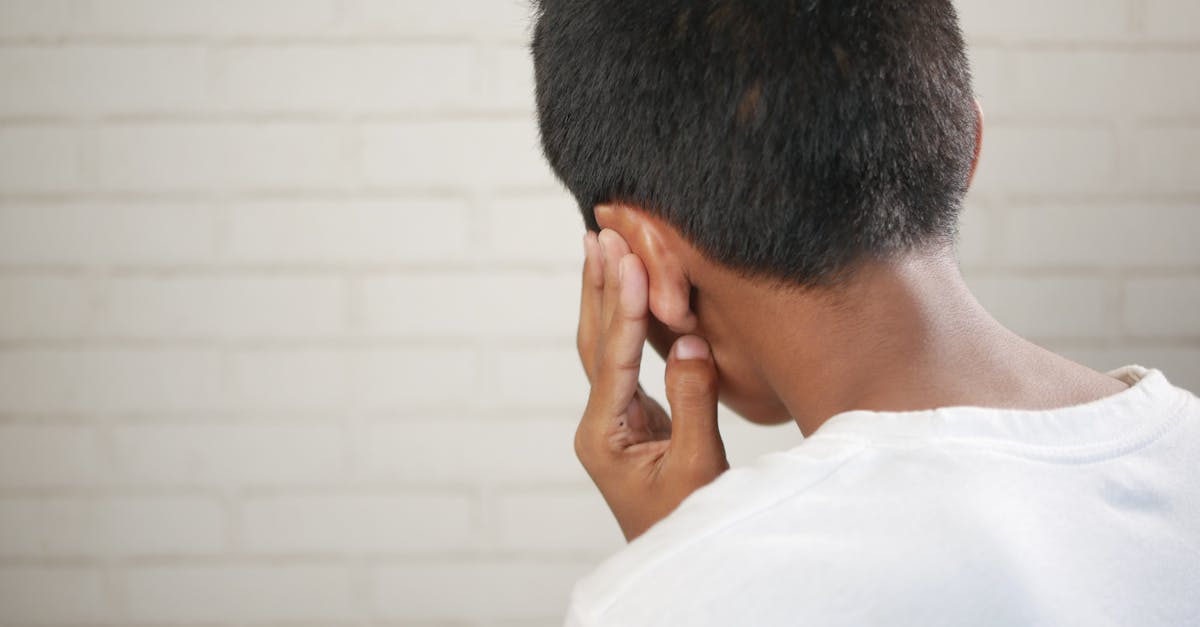In Short, Yoga and Meditation are powerful techniques designed for managing migraines effectively. These practices help individuals enhance their emotional and cognitive control over pain, leading to reduced headache frequency and intensity. By incorporating mindful breathing and relaxation exercises, practitioners can alleviate stress, which is a primary trigger for migraine attacks. Additionally, targeted yoga poses foster improved blood circulation, promoting overall well-being. Together, these methods offer a holistic approach to reclaiming a life free from debilitating headaches. |
Yoga and meditation have emerged as impactful techniques for managing migraines on a daily basis. Through practices like mindful breathing, progressive muscle relaxation, and specific yoga poses, individuals can significantly reduce the severity and frequency of migraine attacks. The calming effects of mindfulness promote healthier blood circulation and emotional regulation, empowering those suffering from migraines to reclaim aspects of their daily lives. Moreover, integrating these holistic methods into one’s routine provides a foundation for coping with chronic pain effectively.

Pulse Align offers a gentle, non-invasive approach designed to help individuals and families restore their body’s natural balance and posture through subtle, imperceptible pulses. This innovative method promotes muscle tone symmetry, supporting the body’s inherent ability to function optimally while providing clients with the potential to experience improved comfort and overall wellness.
Gentle Recalibration for Functional Balance
At Pulse Align, our focus is not on treating specific conditions or discomforts; rather, we emphasize empowering the body to recalibrate itself naturally. By prioritizing muscle tone symmetry and improved posture, clients often discover a reduction in tension and discomfort that arises from everyday life. Our approach promotes the body’s innate processes without asserting medical claims, aiming to facilitate a holistic sense of balance and well-being.
Personalized Experiences and Positive Results
Each client’s journey with Pulse Align is uniquely tailored to their needs. Feedback from clients indicates noticeable improvements in their experiences related to neck and back discomfort, improved posture, and overall wellness. These testimonials highlight how our supportive method can contribute to a sense of well-being, reinforcing our commitment to fostering a positive and nurturing environment for all clients.
Visit Us to Learn More
We invite you and your family to explore the benefits of Pulse Align. With locations in cities like La Prairie, Mont-Royal, and Terrebonne, our services are designed for everyone, including children and pregnant women. Feel free to visit our website to learn more, find a nearby location, and book a consultation. Remember, Pulse Align complements other health services but does not replace them; clients are encouraged to maintain communication with their healthcare teams for ongoing wellness.
Experience the safe, non-invasive, and family-friendly approach at Pulse Align. We look forward to assisting you on your wellness journey!
- Paced Breathing: Practicing deep, rhythmic breathing can help in reducing stress and the intensity of migraines.
- Mindfulness Meditation: Focusing attention in the present can lead to better emotional control over pain.
- Progressive Muscle Relaxation: This technique systematically relaxes muscle groups and is shown to decrease migraine frequency.
- Yoga Poses: Specific poses like Child’s Pose and Cat-Cow can help alleviate headaches.
- Guided Meditation: Engaging in guided sessions can provide relief by calming both the mind and body.
- Yoga Breathing Exercises: Also known as Pranayama, these techniques enhance blood circulation and reduce pain.

Migraines can be debilitating, impacting daily life and overall well-being. However, incorporating yoga and meditation into your routine can offer effective strategies for managing the frequency and intensity of migraine attacks. These practices serve as a holistic approach, targeting both the physical and psychological aspects associated with migraine pain. Below, we will explore various techniques that can aid in mitigating these debilitating headaches.
Understanding the Connection Between Mindfulness and Migraines
Mindfulness practices, particularly meditation, play a crucial role in how individuals perceive and cope with pain. By training the mind to reassess discomfort, individuals can enhance their emotional and cognitive control over pain sensations. Mindfulness meditation fosters a sense of calm, allowing individuals to detach from the immediate stressors that can trigger migraines. Through consistent practice, individuals may find that they are better equipped to handle migraine-related stress.
Integrating Yoga for Physical Relief
Yoga is an ancient practice that combines physical postures, breathing techniques, and meditation to address both body and mind. Specific yoga poses can aid in reducing muscle tension and promoting relaxation, which is essential for migraine relief. For instance, forward bends and gentle twists can alleviate neck and shoulder strain, often contributing to headaches. A few recommended poses for headache relief include:
1. Child’s Pose
This restorative pose allows the neck and back to relax while promoting deep breathing. It helps release tension and calms the mind.
2. Cat-Cow Stretch
This sequence of poses encourages spinal flexibility and mobilizes tension in the back, providing relief that can extend into the neck area.
3. Legs-Up-the-Wall Pose
This inversion helps promote blood circulation and reduce tension in the lower back, which can be particularly beneficial for those experiencing headaches.
Practicing Relaxation Techniques
In addition to yoga poses, incorporating specific relaxation techniques can significantly reduce migraine frequency. Paced breathing, for example, emphasizes slow, controlled breaths, which calms the nervous system and diminishes stress levels. Techniques such as progressive muscle relaxation can also be employed to gradually relieve tension throughout the body. Regular practice of these techniques can help forge resilience against migraine triggers.
The Role of Meditation in Migraine Management
Meditation serves as an invaluable tool for managing migraines. By promoting healthy blood circulation and enhancing mind-body awareness, individuals can reduce the severity and intensity of migraines. Guided meditations specifically tailored for migraine sufferers can be particularly effective. These sessions often focus on deep relaxation, visualization, and positive affirmations to counteract negative thought patterns associated with pain.
Building a Supportive Routine
Establishing a daily routine that integrates both yoga and meditation can create a powerful foundation for migraine management. As you become more attuned to your body and mind, you’ll likely discover the specific practices that resonate most with you. Tailoring the routine to suit your individual needs can lead to improved outcomes.
| Technique | Benefits |
| Paced Breathing | Helps in reducing stress and promoting relaxation, which may lower migraine frequency. |
| Mindfulness Meditation | Enhances emotional and cognitive control over pain perception, potentially mitigating migraine intensity. |
| Progressive Muscle Relaxation | A systematic method that has demonstrated effectiveness in reducing migraine occurrences. |
| Yoga Poses | Incorporates stretching and strengthening exercises that reduce muscle tension linked to headaches. |
| Guided Meditation | Focuses on mental relaxation and visualization techniques that can ease headache symptoms. |
| Nostril Breathing | A breathing technique that promotes calmness, potentially relieving migraine pain. |

Transformative Wellness Journey Through Yoga and Meditation
Clients have consistently reported significant improvements in managing their migraines through the innovative techniques offered by Pulse Align. By embracing a holistic approach, clients have unlocked their body’s natural ability to recalibrate and restore balance, leading to a more harmonious existence. Whether they are practicing mindfulness meditation or participating in specially tailored yoga sessions, the experiences shared illustrate a shift towards greater well-being.
In regions like La Prairie, clients seeking to enhance their overall well-being have found immense value in these practices. The unique services provided by Pulse Align cater to the needs of those grappling with chronic headaches, making it an ideal supportive environment for recovery.
Moreover, testimonials from individuals in Chicoutimi resonate with stories of emotional and cognitive empowerment, highlighting how individuals have learned to reassess their pain through mindfulness. This technique not only fosters a deeper understanding of their condition but also cultivates a community where people can share their experiences and coping strategies.
In Mont-Royal, clients have transformed their relationship with pain, acknowledging the profound effects of yoga poses and relaxation techniques. Many report that paced breathing exercises have significantly reduced the frequency and intensity of their migraine episodes, allowing them to reclaim their daily activities without fear of debilitating headaches.
Pulse Align works in conjunction with healthcare teams, providing a seamless integration of services that empower clients and their families. In Terrebonne and beyond, this collaborative approach underscores the commitment to ensuring that individuals receive comprehensive support on their wellness journey.
For clients in areas such as Saint-Jérôme, the approach of blending ancient practices with modern wellness techniques resonates deeply. They have benefited from guided sessions designed specifically for migraine relief, corroborating the effectiveness of yoga and meditation as legitimate modalities for holistic health.
Diversifying wellness techniques is pivotal, and as clients in Charlesbourg testify, the blend of meditation and physical practice aids in not only reducing migraines but also promoting a state of mental clarity and emotional resilience. The enduring feedback signifies the community’s embrace of Pulse Align’s philosophy that supports the innate healing potential within each individual.
Individuals in Châteauguay have also found solace in these methods, often remarking on the gentle shift in their migraine patterns after incorporating Pulse Align’s unique practices into their routines. This shift has inspired many to explore the possibility of living a life less dictated by pain.
The call for enhanced wellness methodologies is more pronounced in areas like Deux-Montagnes and Sainte-Marie. Here, the integration of yoga and breathing exercises has proven to help clients navigate everyday challenges. As they learn to manage their migraines, they experience renewed hope and an increased sense of agency over their health.
To learn more about how our innovative techniques can support your wellness journey, explore our options and find a location near you by visiting Our Clinics. Together, we share a commitment to fostering better health and holistic recovery.
Migraines can significantly impact one’s quality of life, but recent studies suggest that incorporating yoga and meditation into daily routines can provide effective management strategies. These ancient practices offer more than just physical benefits; they promote emotional and cognitive resilience, which is essential for individuals dealing with chronic pain.
The methodology behind these techniques is rooted in the principles of mindfulness. By cultivating a practice that emphasizes awareness of the present moment, individuals can learn to reassess their pain perceptions. Mindfulness practices enhance emotional regulation, allowing individuals to cope with pain more effectively. This emotional recalibration can greatly diminish the intensity of migraine attacks for many sufferers.
Yoga, in particular, has gained recognition as a complementary treatment for migraines. It combines physical postures with breathing exercises and meditation, effectively addressing both physical symptoms and mental strain. Specific yoga poses—such as Child’s Pose, Downward Dog, and Cat-Cow—are designed to relieve tension in the neck, shoulders, and back, areas commonly affected by stress and pain. Regular practice of yoga can also promote relaxation and reduce stress levels, vital factors in mitigating migraine triggers.
Behavioral techniques like paced breathing exercises are equally effective. This practice encourages individuals to focus on their breath, helping to ground them during a migraine attack. Slow, intentional breathing can help lower heart rates and provide a calming effect, which may lessen pain perception. By integrating paced breathing with yogic practices, individuals can create a holistic approach to migraine relief.
Progressive muscle relaxation is another technique that has demonstrated efficacy in managing migraine frequency. By systematically tensing and then relaxing muscle groups throughout the body, individuals can release built-up tension and ache, which might otherwise contribute to the onset of migraines. This technique aligns seamlessly with both yoga and meditation practices, creating a comprehensive toolkit for migraine sufferers.
Meditation, particularly mindfulness meditation, stands out for its ability to promote healthy circulation and ease the mind. When the body is calm and centered, the likelihood of a migraine attack may decrease. Guided meditation sessions designed for migraine patients can be especially helpful, providing targeted strategies to alleviate pain and enhance overall wellness.
Moreover, integrating yoga breathing exercises into daily routines can have profound impacts on chronic migraine management. These exercises not only enhance oxygen flow to the brain but also serve to anchor individuals during painful episodes. Additional practices, such as meditation focused on pain relief, can empower migraine sufferers by shifting their focus away from discomfort and fostering a sense of control.
Ultimately, combining yoga and meditation equips individuals with practical strategies to combat the debilitating effects of migraines. By understanding the physical and emotional dimensions of their pain, sufferers can reclaim their lives from the grip of chronic headaches. As interest in these holistic practices continues to grow, more individuals will discover the invaluable benefits of incorporating yoga and meditation in their journey towards a more serene existence.
Mechanism of Action
TAGMED’s neurovertebral decompression technique operates by applying a controlled and progressive traction force along the spine. This carefully calibrated pulling action helps to increase the space between the vertebrae, subsequently reducing pressure on intervertebral discs and spinal nerve roots. By facilitating an expansion in the spinal column, this method also enhances the circulation of bodily fluids in the targeted area. Consequently, these changes contribute to a significant reduction in inflammation and an alleviation of pain for patients experiencing conditions like herniated discs, bulging discs, and moderate to severe spinal or foraminal stenosis.
Specific Benefits
The non-invasive nature of TAGMED’s decompression method can effectively relieve chronic pain and the symptoms associated with various spinal conditions. The reduction in pressure on the neural structures not only provides immediate relief but also optimizes the flow of fluids around the discs. This mechanism enhances healing by delivering essential nutrients and removing waste efficiently, thereby promoting faster recovery. Patients report an overall improvement in their quality of life, as they experience a decrease in pain levels and regain the ability to engage in daily activities without the constraints typically imposed by their conditions.
Comparison with Other Treatments
When compared to conventional treatments often employed for similar spinal issues, such as analgesics, corticosteroid injections, surgical interventions, and traditional physical therapy, TAGMED’s neurovertebral decompression therapy presents a unique set of advantages. Chief among these is its non-invasive approach, which minimizes the inherent risks associated with surgical procedures and the side effects commonly linked to medication use. Many patients find that they can achieve significant pain relief with a quicker recovery time using this technique as opposed to more invasive methods, which often necessitate extensive rehabilitation.
Case Studies and Testimonials
Numerous patients have reported substantial benefits from TAGMED’s neurovertebral decompression technology. For example, a patient previously reliant on daily pain medications for chronic back pain found considerable relief after a series of sessions with this machine. This individual noted a lasting decrease in pain, coupled with a swift return to regular activities, which had once seemed insurmountable. Another testimonial highlighted a reduction in dependency on pharmacological treatments, helping patients regain control over their lives.
As emphasized in the article Yoga and Meditation: Techniques for Managing Migraines Everyday, such holistic approaches can be essential in managing chronic conditions. TAGMED’s technology complements these methods by providing a targeted solution that not only alleviates pain but also fosters a deeper understanding of the physical processes at play.
In the quest for effective strategies to combat the debilitating nature of migraines, the integration of yoga and meditation emerges as a compelling approach. These practices not only promote physical well-being but also cultivate essential mental resilience. The adoption of mindfulness techniques can revolutionize how individuals perceive and cope with their pain, encouraging a shift from a reactionary response to a more proactive management of migraine symptoms.
When exploring relaxation and breathing exercises, such as paced breathing and progressive muscle relaxation, it becomes evident that these methods hold significant potential in preventing migraine attacks. By focusing on the breath and systematically releasing tension, practitioners can foster a deeper sense of calm that mitigates the intensity of their headaches. Furthermore, integrating simple yoga poses into their daily routine can play a crucial role in reducing stress, a common migraine trigger.
Recent studies emphasize the effectiveness of yoga as an adjunctive therapy, revealing that specific movements combined with meditation not only alleviate the frequency of migraines but also enhance overall well-being. The physical practice of stretching, strengthening, and balancing through yoga fosters better blood circulation, which is vital for addressing the physiological aspects of migraine triggers.
Ultimately, the combination of yoga and meditation presents a holistic avenue for those suffering from chronic headaches. These practices not only address the physical symptoms but also nurture a greater understanding of the mind-body connection. As individuals cultivate these techniques, they may find themselves equipped with powerful tools to navigate their daily challenges, leading to a more empowered and less painful experience with migraines.

Do you suffer from a chronic condition that responds little or not at all to conservative treatments?
At Pulse Align, we understand the quest for holistic methods that restore balance and promote overall well-being without invasive approaches. Our innovative technique features gentle, imperceptible pulses designed to support the body’s natural recalibration process. By focusing on improving muscle tone symmetry and enhancing posture, our clients often experience a remarkable reduction in discomfort and tension, allowing them to lead more balanced and fulfilling lives.
Rather than addressing specific discomforts directly, Pulse Align fosters an environment where the body can naturally recalibrate itself. This not only helps with increased comfort, but often leads to outstanding enhancements in functional movement and overall wellness. We empower our clients to explore how their bodies react to gentle stimulation, which may reflect positively on various aspects of their daily life.
Each client at Pulse Align receives a personalized approach tailored to their unique needs. Testimonials from our community reveal noteworthy improvements in tension and discomfort levels, further showcasing our commitment to holistic wellness. Many have reported feeling lighter and more aligned, all while embracing a healthier lifestyle that resonates with their individual journeys. We take pride in being a trusted partner for those looking to improve their everyday lives through this gentle, alternative method.
We invite you to visit the Pulse Align website to discover more about our range of services, locate nearby clinics in cities such as La Prairie, Mont-Royal, and Terrebonne, and book a consultation for you or your family. Remember, our approach complements existing health practices, and we encourage clients to remain in collaboration with their healthcare team for any ongoing needs. Experience the peace of mind that comes from choosing a safe, family-friendly wellness solution that respects the body’s natural ability to restore balance. To learn more about our services and book an appointment, visit our website: Pulse Align.
Frequently Asked Questions
Headache and Migraine
- Does regular hydration prevent headaches?Yes, staying hydrated reduces the risk of dehydration-related headaches.
- What about ocular migraines?Migraines with aura can cause visual disturbances (flashing lights) before pain onset.
- Can migraines occur at night?Yes, some people wake up with migraines, sometimes linked to sleep disorders.
- Do screens worsen headaches?Yes, prolonged screen time can cause eye strain, tension, and trigger headaches.
- Can lack of sleep cause migraines?Yes, insufficient or poor-quality sleep is a common migraine trigger.
- Are anti-inflammatories effective for migraines?They can relieve mild to moderate attacks, but severe migraines often need specific treatments.
- Can migraines include nausea?Yes, nausea and sometimes vomiting are common migraine symptoms.
- Do sunglasses help during a migraine?Yes, they reduce light sensitivity and partially alleviate symptoms.
- Does noise trigger migraines?Yes, hypersensitivity to sound is common, and loud noises can worsen the pain.
- Does posture influence headaches?Poor posture can cause cervical tension, contributing to headaches.
Ethan Dubois is dedicated to shining a light on the hidden struggles of chronic headaches. As a Headache Awareness Advocate at Pulse Align, he combines compassionate storytelling with cutting-edge research to bring clarity, comfort, and hope to those affected. Ethan’s mission is to empower readers with knowledge, break through stigma, and foster a supportive community where every voice is heard. When he’s not crafting insightful articles, Ethan can be found exploring the latest wellness trends, sharing practical coping strategies, or simply lending a listening ear to those in need. His heartfelt approach and unwavering commitment to awareness make him a trusted ally for anyone navigating life with headaches.
References
- Yu, Z., Wang, R., Ao, R., & Yu, S. (2019). Neck pain in episodic migraine: a cross-sectional study. Journal of Pain Research, Volume 12, 1605–1613. https://doi.org/10.2147/JPR.S200606
- Florencio, L. L., De Oliveira, A. S., Carvalho, G. F., Tolentino, G. D. A., Dach, F., Bigal, M. E., Fernández‐de‐las‐Peñas, C., & Bevilaqua Grossi, D. (2015). Cervical Muscle Strength and Muscle Coactivation During Isometric Contractions in Patients With Migraine: A Cross‐Sectional Study. Headache: The Journal of Head and Face Pain, 55(10), 1312–1322. https://doi.org/10.1111/head.12644
- Martínez-Merinero, P., Aneiros Tarancón, F., Montañez-Aguilera, J., Nuñez-Nagy, S., Pecos-Martín, D., Fernández-Matías, R., Achalandabaso-Ochoa, A., Fernández-Carnero, S., & Gallego-Izquierdo, T. (2021). Interaction between pain, disability, mechanosensitivity and cranio-cervical angle in subjects with cervicogenic headache: A cross-sectional study. Journal of Clinical Medicine, 10(1), 159. https://www.mdpi.com/2077-0383/10/1/159
- Kolding, L. T., Do, T. P., Ewertsen, C., & Schytz, H. W. (2018). Muscle stiffness in tension-type headache patients with pericranial tenderness: A shear wave elastography study. Cephalalgia Reports, 1, 2515816318760293. https://doi.org/10.1177/2515816318760293
- Lin, L.-Z., Yu, Y.-N., Fan, J.-C., Guo, P.-W., Xia, C.-F., Geng, X., Zhang, S.-Y., & Yuan, X.-Z. (2022). Increased stiffness of the superficial cervical extensor muscles in patients with cervicogenic headache: A study using shear wave elastography. Frontiers in Neurology, 13, 874643. https://www.frontiersin.org/articles/10.3389/fneur.2022.874643/full
- Al-Khazali, H. M., Younis, S., Al-Sayegh, Z., Ashina, S., Ashina, M., & Schytz, H. W. (2022). Prevalence of neck pain in migraine: A systematic review and meta-analysis. Cephalalgia, 42(7), 663–673. https://doi.org/10.1177/03331024211068073
- Fernández‐de‐las‐Peñas, C., Cuadrado, M. L., & Pareja, J. A. (2007). Myofascial Trigger Points, Neck Mobility, and Forward Head Posture in Episodic Tension‐Type Headache. Headache: The Journal of Head and Face Pain, 47(5), 662–672. https://doi.org/10.1111/j.1526-4610.2006.00632.x
- Ashina, S., Bendtsen, L., Lyngberg, A. C., Lipton, R. B., Hajiyeva, N., & Jensen, R. (2015). Prevalence of neck pain in migraine and tension-type headache: A population study. Cephalalgia, 35(3), 211–219. https://doi.org/10.1177/0333102414535110
- Al-Khazali, H. M., Al-Sayegh, Z., Younis, S., Christensen, R. H., Ashina, M., Schytz, H. W., & Ashina, S. (2024). Systematic review and meta-analysis of Neck Disability Index and Numeric Pain Rating Scale in patients with migraine and tension-type headache. Cephalalgia, 44(8), 03331024241274266. https://doi.org/10.1177/03331024241274266
- Balaban, M., Celenay, S. T., Lalecan, N., Akan, S., & Kaya, D. O. (2024). Morphological and mechanical properties of cervical muscles in fibromyalgia with migraine: A case-control study. Musculoskeletal Science and Practice, 74, 103185. https://www.sciencedirect.com/science/article/pii/S2468781224002807
- Aoyama, N. (2021). Involvement of cervical disability in migraine: a literature review. British Journal of Pain, 15(2), 199–212. https://doi.org/10.1177/2049463720924704
- Bjarne, B. (2024). NECK MUSCLE ELASTICITY IN CERVICOGENIC HEADACHE PATIENTS MEASURED BY SHEAR WAVE ELASTOGRAPHY [PhD Thesis, Ghent University]. https://libstore.ugent.be/fulltxt/RUG01/003/202/979/RUG01-003202979_2024_0001_AC.pdf
- Hvedstrup, J., Kolding, L. T., Ashina, M., & Schytz, H. W. (2020). Increased neck muscle stiffness in migraine patients with ictal neck pain: A shear wave elastography study. Cephalalgia, 40(6), 565–574. https://doi.org/10.1177/0333102420919998
- Pradhan, S., & Choudhury, S. S. (2018). Clinical characterization of neck pain in migraine. Neurology India, 66(2), 377–384. https://journals.lww.com/neur/fulltext/2018/66020/clinical_characterization_of_neck_pain_in_migraine.19.aspx
- Fernández-de-las-Peñas, C., Madeleine, P., Caminero, A., Cuadrado, M., Arendt-Nielsen, L., & Pareja, J. (2010). Generalized Neck-Shoulder Hyperalgesia in Chronic Tension-Type Headache and Unilateral Migraine Assessed by Pressure Pain Sensitivity Topographical Maps of the Trapezius Muscle. Cephalalgia, 30(1), 77–86. https://doi.org/10.1111/j.1468-2982.2009.01901.x
- Fernández-de-las-Peñas, C., Cuadrado, M., & Pareja, J. (2006). Myofascial Trigger Points, Neck Mobility and Forward Head Posture in Unilateral Migraine. Cephalalgia, 26(9), 1061–1070. https://doi.org/10.1111/j.1468-2982.2006.01162.x
- Luedtke, K., Starke, W., & May, A. (2018). Musculoskeletal dysfunction in migraine patients. Cephalalgia, 38(5), 865–875. https://doi.org/10.1177/0333102417716934
- Choi, S.-Y., & Choi, J.-H. (2016). The effects of cervical traction, cranial rhythmic impulse, and Mckenzie exercise on headache and cervical muscle stiffness in episodic tension-type headache patients. Journal of Physical Therapy Science, 28(3), 837–843. https://www.jstage.jst.go.jp/article/jpts/28/3/28_jpts-2015-893/_article/-char/ja/
- Calhoun, A. H., Ford, S., Millen, C., Finkel, A. G., Truong, Y., & Nie, Y. (2010). The Prevalence of Neck Pain in Migraine. Headache: The Journal of Head and Face Pain, 50(8), 1273–1277. https://doi.org/10.1111/j.1526-4610.2009.01608.x
- Zwart, J. (1997). Neck Mobility in Different Headache Disorders. Headache: The Journal of Head and Face Pain, 37(1), 6–11. https://doi.org/10.1046/j.1526-4610.1997.3701006.x




